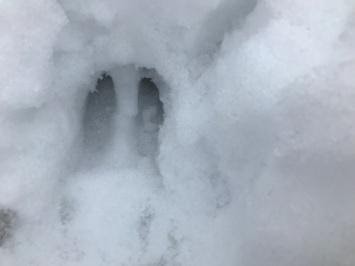February 11, 2020
A couple of weeks ago, I took a walk through the wooded area behind Stone Bank Farm. The three acres on which the farm and market sit is surrounded by an additional 75 acres of protected land thanks to the Faye Gehl Conservation Foundation. From the mid-1800s, until the 1950s, these 75 acres, and then some, was farmed by Scottish immigrant, John Ferguson who then passed it on to his daughter and son-in-law, The Roger’s.
From the mid-1950’s until 2003, the land sat idle until businessman, farmer and conservationist, John Gehl, saw the gift to the community in protecting the land that now includes Stone Bank Farm and Market, as well as a beautiful little stream that slices through the property, serving as a connector between Okauchee and North Lakes.
Although the woods still show the impact of its earlier farming days, Mother Nature has a way of taking over that made for a most enjoyable winter walk!
I saw lots of animal tracks on my mid-day hike through woodland and farm fields. Although most tracks were somewhat weather-degraded, I was able to identify raccoon, deer, coyote, opossum, turkey, and squirrel.
Lichens (the yellow stuff in this photo), while often overlooked, are actually quite interesting. We typically see these colorful, crusty growths “smeared” on trees, rocks and other surfaces. Lichens are made up of two different organisms: A fungus and an alga. The alga produces the food and the fungus gathers water. This symbiotic relationship allows the lichens to survive harsh weather that would kill an alga or a fungus growing alone.
I see a work of art in this beautiful old tree trunk, while sharp-beaked, insect-loving birds such as woodpeckers, nuthatches and chickadees must see the banquet of their dreams!
Yellow-bellied Sapsuckers will drill holes in trees in order to harvest the sap. The sapsucker licks the sap from the holes and eats the cambium as well. New holes are usually made in a line next to or above old holes.
My visit to the stream turned up a large, foraging flock of turkeys and the remains of a decomposing buck.





